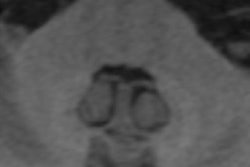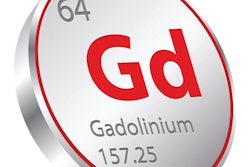More research is needed to explore the nature and clinical significance of gadolinium retention in the brain from the use of gadolinium-based contrast agents (GBCAs), according to a literature review by a Polish group published on 10 February in PLOS One.
A team led by Dr. Cyprian Olchowy of Wroclaw Medical University in Wroclaw, Poland, conducted a systematic literature review in June 2016 and found a total of 25 publications, encompassing a total of 1,247 MR images of patients and tissue specimens from 27 patients. The studies confirmed that increased signal intensity in the dentate nucleus and globus pallidus on unenhanced T1-weighted MR images is associated with previous administrations of GBCAs and corresponds with the concentration of gadolinium in the brain tissue, according to the group.
However, much still isn't known about the clinical significance of these gadolinium deposits.
"Despite [the] rapidly growing number of published papers, the level of knowledge about gadolinium depositions in the brain and their clinical significance remains insufficient; therefore, it seems to be reasonable to choose the most stable types of GBCAs and avoid higher doses, especially in children and young patients even with normal renal function," the authors wrote.
The researchers said there's a strong need for further research to shed light on the nature of gadolinium deposits in the brain, its effect on the functioning of brain tissue, and the prevalence of long-lasting adverse reactions. These studies, which should be prospective and encompass pediatric patients, should also include the participation of radiologists, neurologists, psychiatrists, and biologists, according to the group.
The article can be found here.



















